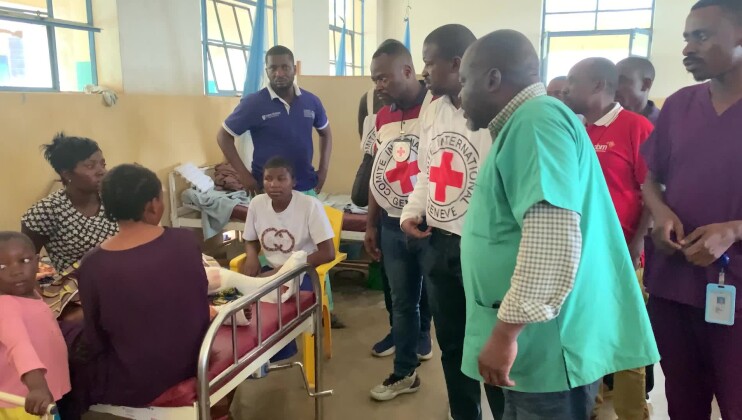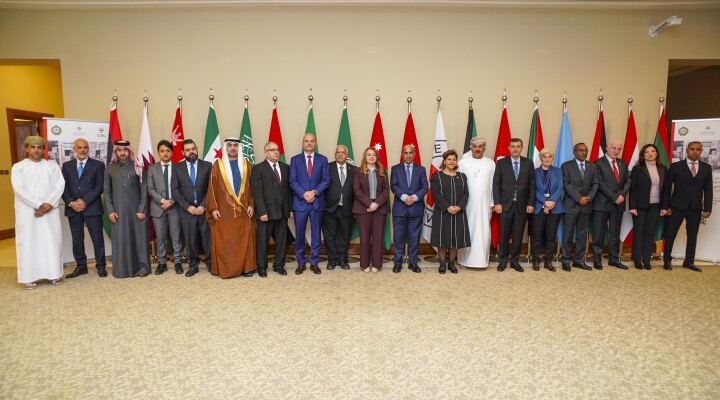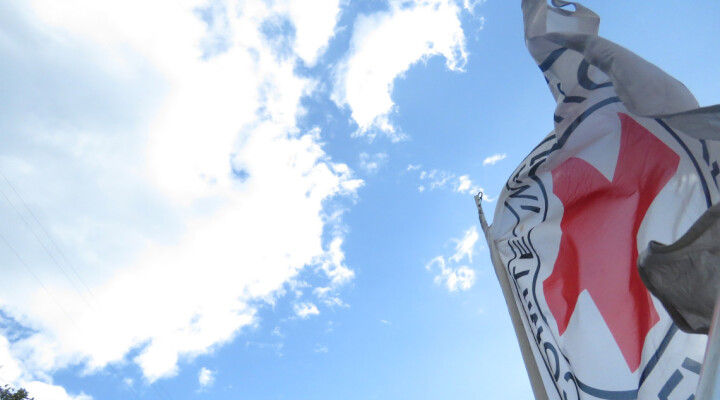Russia–Ukraine International Armed Conflict: A farmer injured, underscoring huge risks of mines for entire communities
Geneva (ICRC) – Artur was driving through the sunflower fields of northern Ukraine when the heavy wheels of his tractor triggered devastation.
“We were driving to the field and hit a mine. I was in the driver’s compartment and had to free my leg. The guys ran up and helped me get out. Many thanks to them, because the harvester then caught on fire. If I had gone alone who knows what would have happened to me,” Artur Sakhno said.
Unexploded bombs, shells and mines pose a direct threat to agriculture workers across frontline areas, both from intensified fighting of the last 18 months, as well as longer-term conflict that began in 2014.
Ukraine is among the most mine-affected countries in the world currently. With much of the country’s economy relying on agriculture, mines, unexploded shells, and other explosive remnants of war could disrupt production for years to come.
In addition to the acute needs of people living along shifting frontlines, weapon contamination poses a long-term problem, demanding significant resources to survey large swathes of affected areas, mark the location of mines, and then begin the long and dangerous task of clearance. This could render significant portions of arable land unusable for years to come.
This challenge to the country’s agriculture industry comes even as the country faces reduced export activities. For individual families, this might mean that buying food to supplement lost production abilities places an additional strain on the household.
For those who rely on cultivating their land to generate income and produce food for their families, the risks posed by staying and trying to maintain a living on land, littered with mines and unexploded shells, can force farmers to move to safer areas.
The ICRC has long-established programs to address economic security that aim to protect lives and restore livelihoods by addressing the economic impacts on people and their families. Our teams work to improve food security and provide support to the agricultural industry at the community level to assist individual producers. They work in conjunction with the ICRC’s weapons contamination team to assess contaminated areas and collaborate with the Ukrainian Red Cross society and other local actors to do awareness raising and education sessions with communities.
We are working with communities on both sides of the frontline and taking a long-term approach, planning not just to respond to acute emergencies, but to also build resilience to restore markets and agricultural systems without creating dependency on humanitarian assistance.
For more information, please contact:
Oleksandr Vlasenko, ICRC Kyiv (Ukrainian, English), +380 95 262 80 23, ovlasenko@icrc.org
Achille Després, ICRC Kyiv (English, French, Italian) +380 50 324 31 80, adespres@icrc.org
Jennifer Sparks, ICRC Geneva (English) +41 79 217 3200, jsparks@icrc.org
SHOT LIST
Date Of Filming: 30 March 2023
Camera: Tetiana Oliinyk
Editor: Anna Bilous
Copyright: ICRC access all
On Screen Credit: ICRC written or logo
SOUNDBITE:
00:00:00 – 00:00:04
We were driving to the field and hit a mine.
00:00:05 - 00:00:07
There were only 10 metres left to the field.
00:00:11 - 00:00:15
I hit it with a wheel.
00:00:16 - 00:00:20
I passed out for 10 seconds, but then I remember everything.
00:00:22 - 00:00:25
Being in the driver’s compartment and getting my leg unstuck.
00:00:25 - 00:00:36
Then I started screaming. I knew the guys were behind me; they helped me out because the combine was high and I couldn't feel my leg anymore.
00:00:36 - 00:00:43
The guys ran up and helped me to get out and called an ambulance.
00:00:43 - 00:00:48
An ambulance came, and I went to the Kharkiv region hospital.
00:00:52 - 00:00:57
Thank God, the guys were not injured. Only I was injured.
00:01:00 - 00:01:07
Many thanks to them (guys) because the harvester then caught fire.
00:01:08 - 00:01:11
If I had gone alone, who knows what would have happened to me?
00:01:12 - 00:01:21
I was lucky. It could be much worse, so it’s like my second birthday.
00:01:23 - 00:01:25
The doctors did their best.
00:01:26 - 00:01:31
I broke a bone here where the needle is.
00:01:32 - 00:01:41
I use a wheelchair because the doctor won’t allow me to stand on my own two feet.
00:01:42 - 00:01:49
My wife makes bandages and helps me to train my legs. They were in a cast for three months.
00:01:49 - 00:01:55
I still need two surgeries on my right leg. And if everything is okay with the left leg, they won’t do anything with it.
00:01:58 - 00:02:11
Close-up shot with legs
00:02:11 - 00:02:16
Another angle with legs (close up)
00:02:16 - 00:02:24
Wheelchair (middle shot)00:02:24 - 00:02:34
Shot with a field.
00:02:34 - 00:02:39
A tractor wheel (close up shot)
00:02:39 - 00:02:46
A tractor (wide shot)\
00:02:46 - 00:02:55
A sign in front of a damaged house that says “Dangerous. Mined!”
00:02:55- 00:03:00
Sign warning of mines along the road
00:03:01-00:03:06
Sign warning of mines in a field



